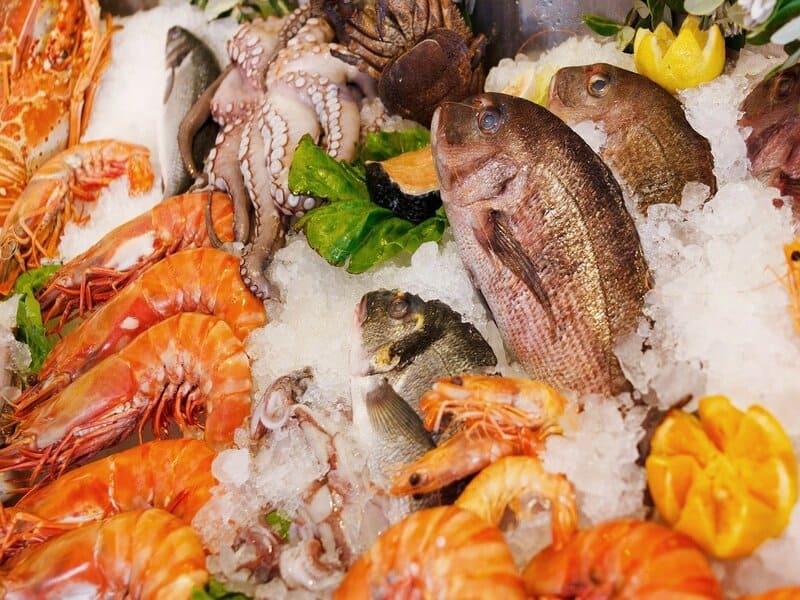
Chamberlains of London – As we move further into 2025, the seafood industry continues to evolve in response to shifting consumer preferences, environmental concerns, and advancements in technology. With rising demand for healthier eating options, sustainability taking center stage, and a growing interest in new culinary experiences, the top seafood consumer trends are reshaping how people approach seafood consumption. From eco-friendly practices to innovative plant-based alternatives, these trends are making waves across the global seafood market.
One of the most significant trends in the seafood industry in 2024 is the increasing demand for sustainability. Consumers are becoming more conscious of the environmental impact of their food choices, and seafood is no exception. Overfishing, ocean pollution, and unsustainable fishing practices have led to concerns about the long-term viability of marine ecosystems. As a result, there is a growing shift toward sustainable sourcing.
To meet this demand, companies are adopting transparent and traceable supply chains. Consumers want to know where their seafood comes from, how it is caught, and whether it’s being sourced in a manner that supports the health of marine ecosystems. Many consumers are now seeking certifications such as the Marine Stewardship Council (MSC) or Aquaculture Stewardship Council (ASC) labels, which guarantee sustainable practices in both wild-capture and farmed seafood.
Seafood brands are responding by implementing better practices, such as reducing carbon emissions, protecting marine biodiversity, and supporting local fishing communities. Companies are also focusing on developing more efficient farming techniques to reduce environmental impacts.
Another key trend in 2024 is the surge in demand for plant-based and lab-grown seafood. As more consumers move toward plant-based diets or reduce their meat consumption, the seafood sector has begun exploring alternative proteins to satisfy these needs. Plant-based seafood products, such as fish fillets, shrimp, and tuna, made from ingredients like seaweed, soy, and pea protein, are gaining traction.
Lab-grown seafood, often referred to as cultured or cell-based seafood, is also becoming an exciting area of innovation. These products are produced using cell cultures from fish or other marine animals, eliminating the need for fishing or farming. This technology is still in its early stages, but the potential to reduce the environmental footprint of seafood production is significant. In 2024, we’re seeing more companies enter the market with lab-grown seafood products that mimic the taste, texture, and appearance of traditional fish and shellfish.
As the technology matures and consumer awareness grows, plant-based and lab-grown seafood will likely play an increasingly important role in the market, offering ethical and sustainable alternatives for environmentally conscious consumers.
With consumers becoming more health-conscious, seafood’s role in a balanced diet continues to be emphasized in 2024. Seafood is rich in essential nutrients, including omega-3 fatty acids, high-quality protein, and various vitamins and minerals, making it a popular choice for individuals seeking to improve their overall health.
In response to the growing demand for functional foods—products that provide health benefits beyond basic nutrition seafood producers are focusing on highlighting the health benefits of their products. Omega-3-rich varieties such as salmon, sardines, and mackerel are being marketed not only as delicious but also as essential components of a healthy diet, supporting heart health, brain function, and reducing inflammation.
In addition, some seafood companies are focusing on fortifying their products with additional nutrients, such as added vitamins, minerals, or probiotics, to appeal to consumers looking for functional foods that promote well-being.
As disposable incomes rise in some regions, there is also an increasing appetite for premium, high-quality seafood experiences. This trend reflects a growing interest in artisanal and specialty products that offer unique flavors and culinary experiences. Consumers in 2024 are more likely to seek out exotic seafood species, sustainable caviar, and other luxury seafood items, such as abalone, uni, and lobster.
Moreover, dining experiences centered around seafood are gaining popularity, with consumers opting for exclusive tasting menus, pop-up seafood events, and food pairings that emphasize freshness and quality. Restaurants and food service providers are elevating the seafood dining experience by offering interactive and high-end dishes that allow consumers to connect with the food on a deeper level.
The convenience of online shopping is transforming the seafood industry, and 2024 is no exception. With the growth of e-commerce, consumers can now access fresh seafood directly from producers and retailers without leaving their homes. Direct-to-consumer delivery services for seafood have surged in popularity, especially as the demand for fresh, high-quality products has risen.
Companies offering subscription services or one-time orders of premium seafood, delivered straight to the door, have seen significant growth. These platforms often provide more transparency regarding sourcing, traceability, and sustainability, aligning with consumer preferences for ethically sourced and fresh products. The convenience factor is another major appeal, as busy consumers opt for home delivery over traditional retail shopping.
With a focus on health benefits, premium offerings, and e-commerce. The seafood market is poise to meet the evolving tastes and concerns of today’s consumers. As we move forward, the seafood industry will continue to adapt to these trends, ensuring that it remains both relevant and responsible in an ever-changing world.